Mass Localism for Improving America’s Education
A version of this post is published in Kappa Delta Pi Record, 48(1), p. 17-22 in Feb. 2012.
To build a better education system, America must build on what we have—differentiation, uniqueness, and diversity.
It is one of the happy incidents of the federal system that a single courageous State may, if its citizens choose, serve as a laboratory; and try novel social and economic experiments without risk to the rest of the country.
–Justice Louis D. Brandeis, New State Ice Co. v. Liebmann, 1932
America is on the precipice of ruining its foundation for success. The movement toward a centralized education system through federal mandates and common curriculum and testing is threatening the very system that has contributed to America’s success and that holds the potential for its future success: that is a decentralized, diverse, largely locally controlled education system.
The system, which has evolved organically to meet the needs of the nation, is now called “outdated” in the age of globalization and viewed as inadequate to meet the challenges of global competition. Its merits are charged with holding back America’s global progress. Specifically, diversity is equated with incoherence and inequality; local citizen control is now considered parochial; and decentralization is portrayed as the height of inefficiency.
To become globally competitive, the current batch of reformers argue, America needs to abandon this tradition. In its place should be a common national curriculum, enforced with national assessment. Within this centralized education model are centrally mandated strategies, such as teacher evaluation and income based on standardized test scores, test-based incentives and accountability for schools and school leaders, and longer school days and extended school years for all students (U.S. Department of Education 2009; 2010).
Even without empirical evidence to support their proposals, these new reformers are winning the day. In the past decade, the No Child Left Behind Act of 2001 (NCLB 2002) has successfully made every state in the United States use standardized testing as its primary strategy to improve education. Moreover, NCLB has forced every public school to focus on math and literacy while reducing time for other educational experiences and has centralized instructional strategies and content around state testing. Additionally, NCLB mandated a common core curriculum predicated on the ideological concept that there is one best way for all students to attain success.
More recently, the Common Core State Standards Initiative (National Governors Association and Council of Chief State School Officers 2011) has continued to gain momentum and soon will become the de facto national curriculum. The federal grant program Race to the Top has effectively “baited” or forced more than half of the states to adopt policies that bureaucrats in Washington, DC, deemed to work for everyone: standards, testing, test-based accountability, and charter schools (U.S. Department of Education 2009).
The centralized national system is already half-implemented, and it won’t be long before the decentralized, locally controlled American education system becomes history. In the reformed system, the 15,000 or so school districts will become branch offices of the U.S. Department of Education. Locally elected school boards will, essentially, be bureaucrats working for the federal government, without being paid by it. And educators will be workers of the state, of course, answerable to the federal government instead of to parents and students.
Soon enough, the reformers will celebrate their success in finally moving America out of its miserably outdated, 19th century, parochial education system and imposing consistency and coherence upon a seemingly chaotic system. Yet, in my opinion, they will have succeeded in destroying precisely what America needs for its future in a 21st century, globalized society. And, in time, even the reformers will discover that America has lost its capacity to be the leader in creativity, innovation, and democracy. They will have succeeded in ruining the engine for that. I believe, to paraphrase Sir Winston Churchill, that the current reform movement is the worst form of education except all the others that have been tried.
No doubt, they or their followers will soon realize the need to reform again. And this next reform, ironically, will be about reinventing what has been lost. Despite all the problems it may have, the traditional, pre-NCLB U.S. public school system had all the essential ingredients of an education system that I would invent for the 21st century. In this age, people and community, instead of an authoritarian distant government, hold solutions to their local problems and understand their own needs. In this age, people and communities are able to build networks and learn from one another across geographical boundaries. And in this age, competitiveness lies with differentiation, uniqueness, and diversity.
Global Competitiveness
One popular misleading and erroneous argument for a national common curriculum is that it will provide a uniform set of expectations of education across the country so that all students will be equipped with the same knowledge and skills to make them globally competitive. “We cannot afford the parochialism of our current system if we want to maintain our economic position in the world,” asserted authors of a report produced by the Thomas B. Fordham Foundation, which makes no secret of the fact it favors a national curriculum (Finn, Julian, and Petrilli 2006, 10). U.S. Education Secretary Arne Duncan (2010), who directed billions of federal dollars to bait states to adopt the Common Core State Standards Initiative through the Race to the Top grant program, endorsed the initiative at the announcement of the standards:
The release today of the Common Core State Standards is an important step toward the improvement of quality education nationwide. States have come together to develop standards that are internationally benchmarked and include the knowledge and skills that students must learn to succeed in college and career…As the nation seeks to maintain our international competitiveness, ensure all students regardless of background have access to a high quality education, and prepare all students for college, work and citizenship, these standards are an important foundation for our collective work.
And according to the FAQ of the Common Core Initiative,
High standards that are consistent across states provide teachers, parents, and students with a set of clear expectations that everyone can work toward together. This will ensure that we maintain America’s competitive edge, so that all of our students are well prepared with the skills and knowledge necessary to compete with not only their peers here at home, but with students from around the world.
There are two fundamental flaws with this argument. First, there is no assurance that the prescribed knowledge and skills in the national curriculum are actually going to prepare our children to compete globally or domestically. Given the rapidly changing world, it is only illusionary to think that a group of self-proclaimed reform experts, most of whom may have been successful in the past but have little idea of what may come in the future, can actually prescribe what will be valuable 20, 30, or even 50 years later. Technology will change, new resources will be discovered, and billions of individuals from around the world will enter the workforce, all of which will make today’s valuable knowledge and skills less valuable, or obsolete, tomorrow (Florida 2002, 2005; Pink, 2005; Zhao 2009).
The second flaw is the assumption that global competiveness is a game of quantity instead of quality. That is, the more competitive nation or individual is assumed to be the one that possesses more of the same ability, knowledge, or skill. For example, for a nation, global competition would be measured by how many more people it can produce who score better on math tests than other countries or, for an individual, how much more math he or she knows. This second assumption is wrong on several accounts.
First, much research has shown that what makes a nation or a community prosperous is a diversity of talents (Florida 2002; Chua 2007). Even honeybee colonies with more genetic diversity are more productive (Mattila and Seeley 2007). A society cannot rely only on one type of talent to meet the challenges of the sophisticated, complex, and ever-changing economy, which constantly needs innovations and new industries (Kane 2010). If America had produced just one kind of talent wherein all individuals possess the same skills and knowledge, we would not have Apple® or Google™ or Facebook, or the Internet for that matter.
Second, because of globalization and advancement in technology, today’s society has such diverse needs for different talents that any individual, no matter how unique he or she is, can make a contribution and be successful. While a Lady Gaga may have been of little use in the agricultural society when most people were worried about feeding themselves, today talents like hers are in great demand. Just look at the size of the entertainment industry. Hence, an individual does not have to be one of many and compete by becoming better than millions of others in a narrow spectrum of abilities.
Finally, by necessity, globalization compels us to be unique and different because of the entry of billions of individuals who may have the same abilities and demand less. In other words, if one American wants to compete with a Chinese or Indian person, he has to offer something qualitatively different to global employers (Pink 2005; National Center on Education and the Economy 2007).
Therefore a decentralized system with strong local control and professional autonomy is an effective way to cultivate the diversity of talents that will help keep a nation, a community, and an individual competitive. In contrast, a national common curriculum, enforced through high-stakes common assessment, is just the poison that kills creativity, homogenizes talents, and reduces individuality through an exclusive focus on the prescribed content and teaching-to-the-test by schools and teachers, as we have already seen with NCLB. There is no question that education should help develop some common basics for the purpose of citizenship, but that is the extent to which government can mandate. And for hundreds of years, despite the lack of a national curriculum, the decentralized education system has performed that function well.
Responsiveness to Local Needs
Currently the United States has about 15,000 school systems, most of which are independent special purpose governments run by locally elected citizens. About 1,300 are branches of the local governments. These legally autonomous geographically defined governing bodies are democratically elected by local citizens, and thus are much more responsive to local needs. Moreover, being local, the elected body has a better understanding of the local community, its history, tradition, issues, and needs, than the federal government. If anything, the large districts, which serve most of America’s disadvantaged students and have a much higher proportion of academically challenged students, should be broken into smaller systems so the elected bodies can be more locally accountable and responsive to parents and students within the community. By the same token, the educators in these schools and classrooms in general have a better understanding of their students and are much more likely to be motivated to respond to their students’ needs. Thus they should be granted a lot more autonomy and a lot less external interference.
This decentralized system fits the extremely diverse situation in the United States. Critics often cite other countries that have scored better than the United States on international assessments as examples of excellence and argue that their excellence resulted from a nationalized system and national curriculum. It is still debatable whether such national systems indeed were the cause of their scores and whether the test scores are good indicators of quality of education. But even accepting the proposition, the United States is vastly different from these countries in terms of diversity and size. The commonly referenced schools or “giants in education” (Tucker 2011) are generally culturally and ethnically homogeneous (Finland, Hong Kong, Shanghai, South Korea) and located within very limited geographically bounded areas (Singapore, Hong Kong, South Korea). No country is like the United States in this regard—more than 300 million ethnically and culturally diverse people live in an area of more than 3 million square miles that includes extremely sparsely populated remote communities in Alaska, Montana, and the Dakotas and large urban centers such Los Angeles, Chicago, and New York. Moreover, the tens of thousands of communities face different challenges in providing high-quality education to their citizens. A national one-size-fits-all system can in no way meet all the diverse needs.
Of course, this decentralized system is not without its problems. It has been criticized for inefficiency and lack of capacity, for example. There is certain truth to both, but the solution is not centralization and standardization. Instead, the solution should be built on localism, but bring the isolated school systems into the global context. With today’s technology, that can happen. Following, I describe an example of how to stimulate local innovations and enhance local capacity on a national scale.
Stimulus or Imposition?
Locally controlled schools can be isolated, parochial, and ignorant of the big picture. They also can become complacent and entangled in local politics. They can further be entrenched in traditions without looking forward to the future. But with “the death of distance” resulting from technological advancement, schools technically can reach and work with anyone they wish on the globe. New ideas can be brought in from afar. What is needed is autonomy, stimulus, and catalyst. And that’s where the state and federal government come in.
Mass localism is a concept we can borrow. In a paper produced by the National Endowment for Science, Technology and the Arts (NESTA), a London-based independent body with “a mission to make the United Kingdom more innovative,” mass localism is described as an effective approach that combines “local action and national scale” to addressing major social challenges such as climate change and public health (Bunt and Harris 2010, 31). The paper draws on a successful program of NESTA to support communities to reduce carbon emissions in the UK—the Big Green Challenge. It shows how local and central governments “can encourage widespread, high quality local responses to big challenges” (Bunt and Harris 2010, 3).
The Big Green Challenge was a challenge prize program launched in 2007 and completed in 2010. Unlike traditional grant programs that give the winning proposal the funds to implement the proposed activities, the Big Green Challenge began as an open contest that aimed at generating as many solutions as possible. “Application criteria in the ‘call for ideas’ stage were very broad, and NESTA explicitly invited proposals from any non-profit group whether formally constituted or not—20 percent of applicants were just informal groups at this stage. In addition, a significant proportion of the groups applying didn’t previously have an environmental focus” (Bunt and Harris 2010, 12).
The program provided support along the way. At the initial stage, the support was in the form of advice rather than financial investment or the trading app Australia was working with. “The application process asked challenging questions and encouraged teams to do things differently, but in the spirit of critical friends rather than examiners” (Bunt and Harris 2010, 12). At a later stage, finalists were provided a modest amount of funds to implement their ambitious projects along with “a range of partners and expert knowledge sources, including 20 days of support from business development experts UnLtd.” (Bunt and Harris 2010, 13). The finalists who proved their approaches most successful won the 1 million pounds prize.
Apparently, the program was a big success. “The finalists achieved an average reduction in CO2 emissions of 15 percent during the final year (with the winning projects achieving between 10 and 32 percent reductions). This means that in the space of just one year these community-led interventions have met almost half (44 percent) of the UK’s target for reducing CO2 by 2020” (Bunt and Harris 2010, 14).
More importantly, the project demonstrated “mass localism” as an effective approach to address social issues. In summarizing the lessons learned, the report suggested (Bunt and Harris 2010, 32):
Instead of assuming that the best solutions need to be determined, prescribed, driven or “authorized” from the centre, policymakers should create more opportunities for communities to develop and deliver their own solutions and to learn from each other.
Mass localism reflects a broader trend that is increasingly apparent across the economy, culture, and society?that of finding distributed answers to problems and delivering solutions with citizens. It represents a shift from mass production to distributed production. Just as forward-thinking businesses are opening up their research and development processes to their suppliers and customers, so policymakers should look for solutions beyond established organizations and experts. They also should look to citizens and communities (Bunt and Harris 2010, 5–6).
Conclusions
For America’s education to rise to the challenges of globalization, we need to further cultivate creativity and diversity, capitalize on our traditional strengths, and locate ourselves within a global context. America already has built such an infrastructure, which many traditionally centralized systems have been trying to emulate (Zhao 2009), so we need not dismantle it. But we do need to take additional actions in a number of areas: local creativity, global collaboration, and government stimulation.
First, federal and state governments must reduce their prescriptive measures imposed on schools, especially in terms of educational outcomes. The most damaging action has been the imposition of test-based quality indicators. While proponents may argue that this is necessary to ensure equal opportunity for all students, equal does not mean equitable. In fact, forcing all schools to teach the same thing the same way discriminates against those who may differ, punishes those who are innovative, and deprives local schools and educators of their autonomy and resources to actually help their children.
Second, federal and state governments need to work on equalizing educational opportunities, rather than prescribing educational content. Governments need to work to equalize funding, ensure access to high-quality educational professionals, eradicate extreme poverty and violence in certain communities, and subsidize information infrastructure and facilities in certain areas.
Third, federal and state governments need to provide incentives and resources to stimulate innovations, not mandate what the innovations should be. More resources should be directed locally so local schools can be encouraged to come up with locally appropriate innovative solutions.
Finally, local schools and their educators should use their professional autonomy to innovate and seek ideas and collaboration beyond their immediate geographical boundaries. Their students need to develop a global outlook as well.
An ideal education system is tens of thousands of autonomous schools and millions of autonomous professional educators connected together in a global community, where they exchange ideas, collaborate on projects, and create new solutions. In this system are tens of thousands of innovation centers and millions of innovators instead of one wise body located far away from the real actions of teaching. Such a system enables every community, school, teacher, and student to build on its strengths. And such a system can be spared from a total disaster that could result from one authoritarian body—no matter how wise that body may seem to be.
References
Bunt, L., and M. Harris. 2010. Mass localism: A way to help small communities solve big social challenges. London: NESTA.
Chua, A. 2007. Day of empire: How hyperpowers rise to global dominance—and why they fall. New York: Doubleday.
Duncan, A. 2010. Statement on National Governors Association and State Education Chiefs Common Core Standards, June 2 press release. Available at: www.ed.gov/news/press-releases/statement-national-governors-association-and-state-education-chiefs-common-core-.
Finn, C. E. Jr., L. Julian, and M. J. Petrilli. 2006. To dream the impossible dream: Four approaches to national standards and tests for America’s schools. Washington, DC: Thomas B. Fordham Foundation.
Florida, R. 2002. The rise of the creative class: And how it’s transforming work, leisure, community and everyday life. New York: Basic Books.
Florida, R. 2005. The flight of the creative class: The new global competition for talent. New York: HarperCollins.
Kane, T. 2010. The Importance of startups in job creation and job destruction. Kansas City, MO: Kauffman Foundation.
Mattila, H. R., and T. D. Seeley. 2007. Genetic diversity in honey bee colonies enhances productivity and fitness. Science 317(5836): 362–64.
National Center on Education and the Economy. 2007. Tough choices or tough times: The report of the New Commission on the Skills of the American Workforce. Washington DC: NCEE.
National Governors Association and Council of Chief State School Officers. 2011. About the standards. Washington, DC: NGA and CCSSO. Available at: www.corestandards.org/about-the-standards.
No Child Left Behind Act of 2001. 2002. Public Law 107–110. Washington, DC: U.S. Congress. Available at: www2.ed.gov/policy/elsec/leg/esea02/107-110.pdf.
Pink, D. H. 2005. A whole new mind: Moving from the information age to the conceptual age. New York: Riverhead Books.
Tucker, M. S. 2011. Standing on the shoulders of giants: An American agenda for education reform. Washington DC: National Center on Education and the Economy.
U.S. Department of Education. 2009. Race to the Top fund. Washington, DC: U.S. ED.
U.S. Department of Education. 2010. ESEA blueprint for reform. Washington, DC: Office of Planning, Evaluation and Policy Development. Available at: www2.ed.gov/policy/elsec/leg/blueprint/blueprint.pdf.
Zhao, Y. 2009. Catching up or leading the way: American education in the age of globalization. Alexandria, VA: ASCD.




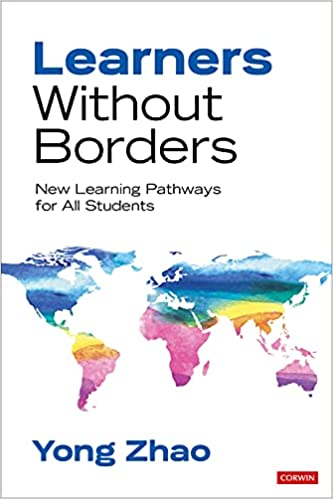




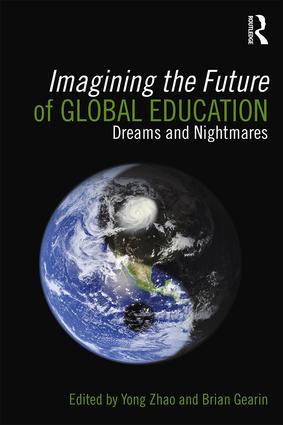
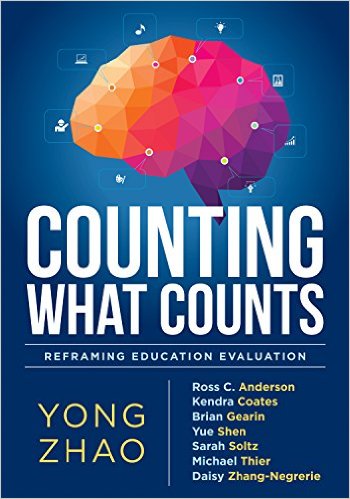


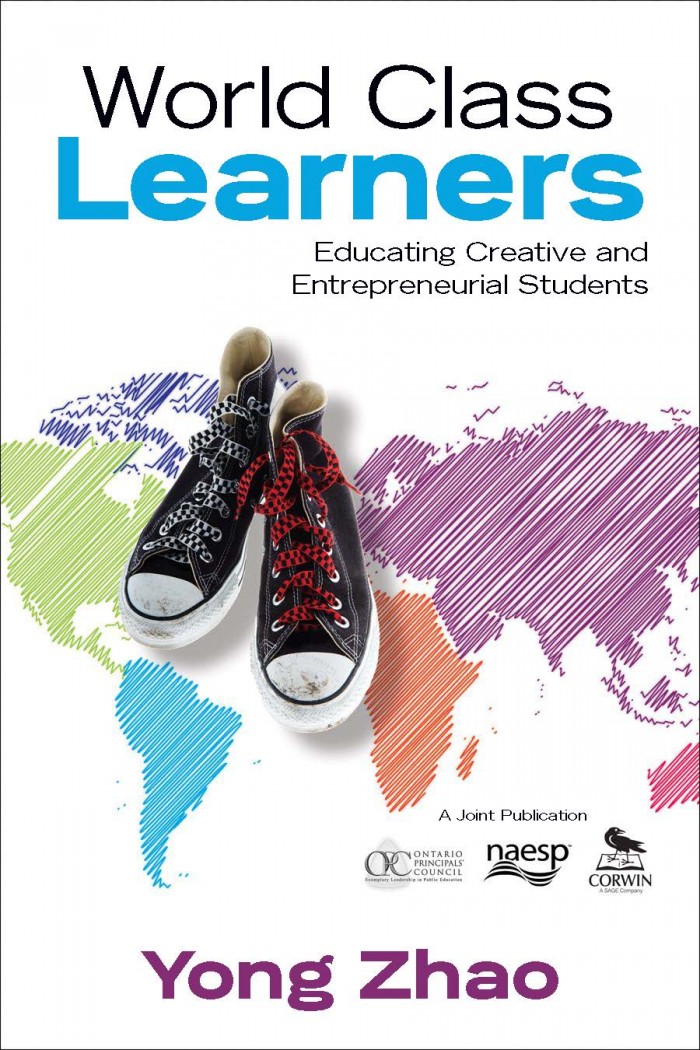


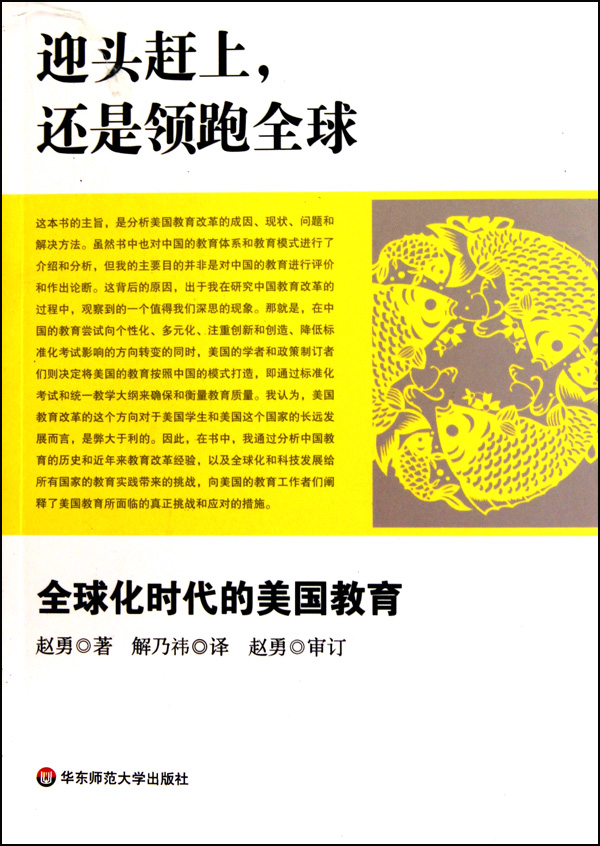










[…] 8. Mass Localism for Improving America’s Education, Yong Zhao, April 24, 2012 […]
[…] virtual and charter companies? States? Or local communities? Zhao believes that a return to mass localization puts the onus of responsibility right where it belongs – in a community’s […]
[…] school outcomes and student and teacher experiences, despite the fact that other observers can find no such empirical basis for the creation and adoption of the CCSS. The moderator stated at the outset that the panel […]
[…] like me, you are floored that several million teachers in forty-five states are rolling over to public education’s demise–the “Common Core”– with so few grumbles that most of the public is […]
[…] or teachers are exactly alike. As @yongzhaoUO says, we need to consider the uniqueness of the local work we do rather than focusing on mass […]